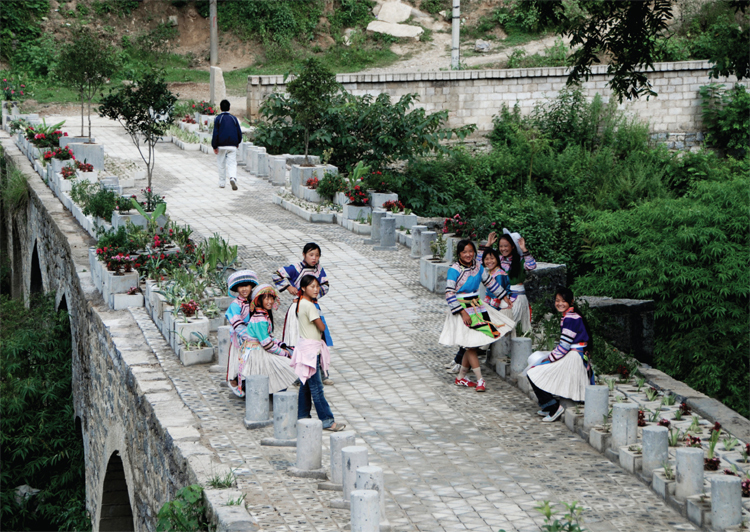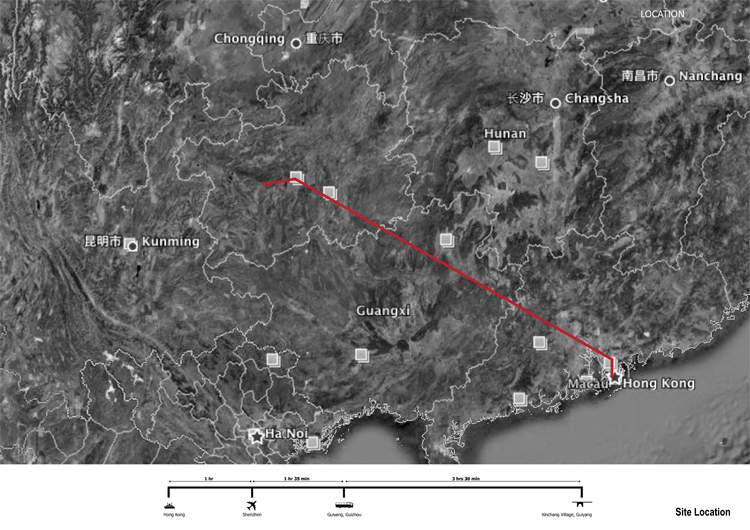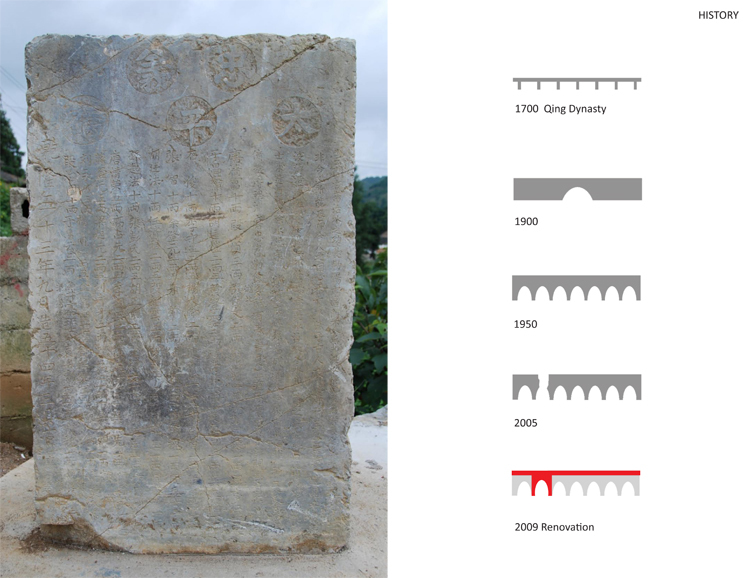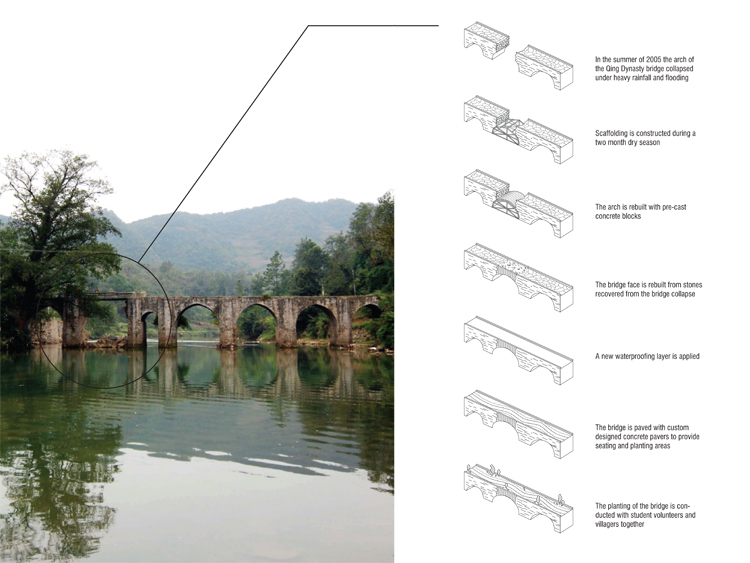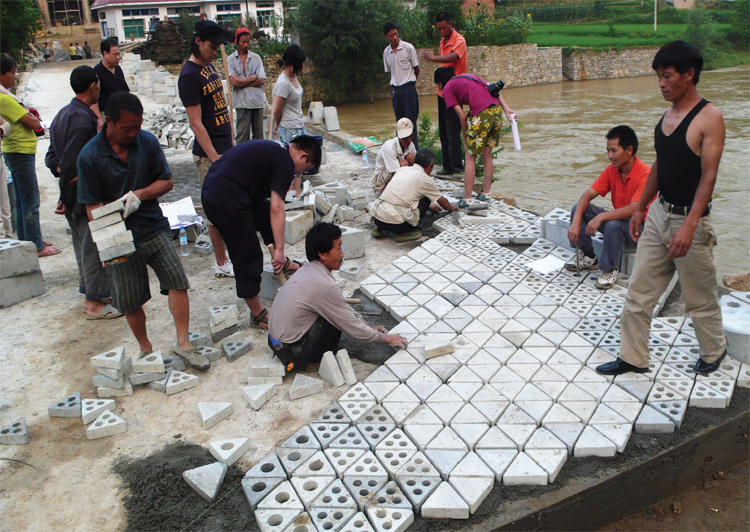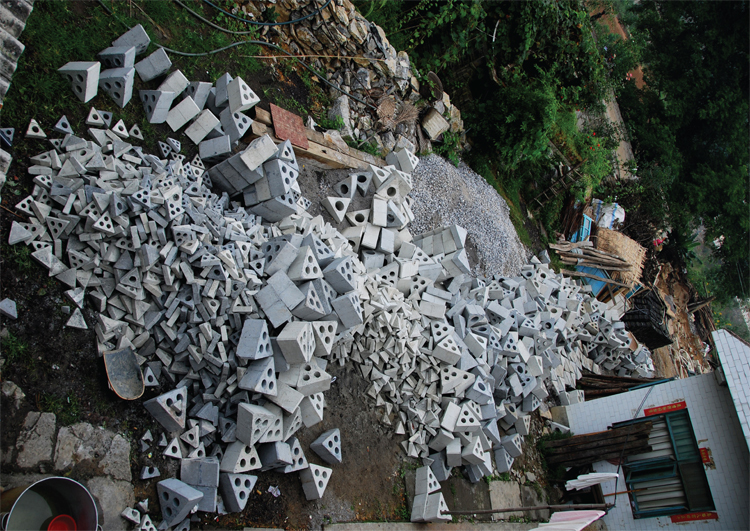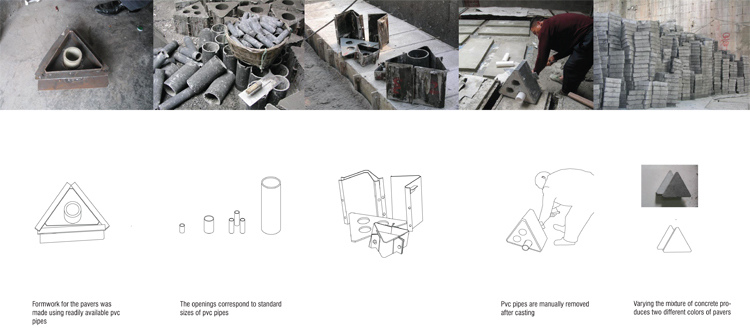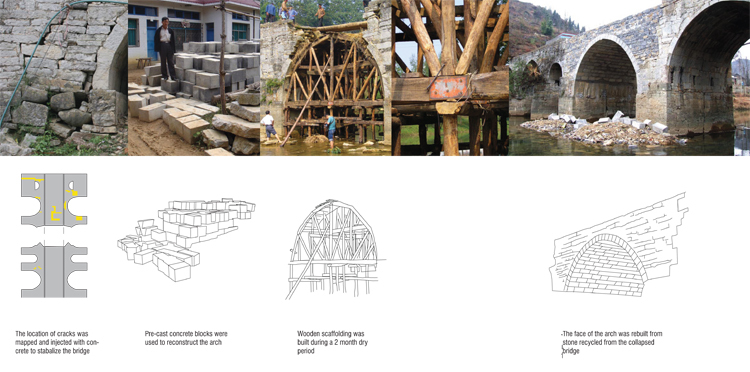Taiping Bridge Renovation
Taiping Village
- Architecten
- Rural Urban Framework
- Jaar
- 2009
DESIGNER:
John Lin / The University of Hong Kong
CONTACT:
[email protected]
COMMISIONING DONOR:
Wu Zhi Qiao Foundation
PROJECT COLLABORATORS:
The University of Hong Kong
Chongqing University
CREDITS:
Dr. Xing Shijian, Professor, Chongqing University
PROJECT DETAILS:
Date: 2006-2009
Size: 200 sqm
Total Cost: 25,000 usd
Unit Cost: 125 usd/sqm
DESCRIPTION:
The TaiPing Bridge Project was a two-year reconstruction and surface renovation project of a historic 300 year-old bridge in Guizhou Province, China. Like most rural areas in China, the village has undergone massive changes, reflective of the rapid urbanization process elsewhere. The project attempted to reconcile the long history of the existing masonry construction with modern techniques of pre-cast concrete. Though the primary task was to repair a collapsed arch, the larger problem was how to revitalize the once important and historic location. Pre-cast concrete was used to rebuild the arch as well as pave the bridge. Bridge pavers were custom designed to transform into planters at various scales as well as seating. In this way the bridge was re-programmed as a public space. Volunteers and villagers planted the bridge with a combination of donated plants and wild varieties sourced from the surrounding mountains.
A project to renovate a 300 year-old Tang Dynasty bridge in Guizhou Province brings to life the issue of a bridge in more ways than one. Sponsored by the Wuzhiqiao foundation of Hong Kong and working with students at The University of Hong Kong and Chongqing University in China, the project was able to engage issues beyond the physical repair of the bridge. Though the immediate problem was a collapsed arch, eventually the project touched upon social, economic, and cultural issues surrounding the bridge and the village itself. The act of repairing the bridge led to a design process that didn’t end with the problem of connection between two sides of a river, but expanded to the problem of a historical connection between the past and the present condition of the village. The design also involved the problem of bridging between traditional and modern techniques, both of which were employed towards the final solution. Ultimately the project necessitated the collaboration between multiple parties from Hong Kong and China, NGO’s, local government, schools of architecture, students and villagers. The eventual outcome is simply a bridge. But the two year process of design and construction expanded the notion of bridge beyond its physical limits.
The Wu Zhi Qiao Foundation commissioned The University of Hong Kong to repair the bridge but to also involve students in all the design and construction work. The bridge was not only physical but metaphorical, by joining students from Hong Kong with students in China and the villagers of Tai Ping Village together.
Previously the bridge used to connect two villages. The local marketplace was situated in an area next to the bridge. Due to recent highway construction, the bridge was no longer necessary. After the bridge collapse, the market was also threatened. After the renovation, not only do the villagers use the bridge recreationally, the market takes place weekly on the bridge itself.
The project really began in 2005 when one of the arches of the masonry bridge collapsed under flooding. In 2006 a team of students and teachers from The University of Hong Kong and Chongqing University visited the bridge for the first time. The project was initially defined as the repair of the broken arch. However after initial investigation a historical plaque was unearthed which described the long history of the bridge. Over its 300 year history the bridge had been renovated, repaired and altered many times. This was simply another stage in its history. The bridge surface at the time had eroded into a dilapidated state. The project expanded from a problem of preserving a 300 year old bridge to trying to improve upon its current condition. A decision was taken to not only work towards the preservation of the bridge but upgrading its surface to make it more usable for the villagers.
Bridge between past and present
Further investigation revealed that another cause for the disrepair of the bridge was the recent change of dynamic in the village. Historically this bridge was the most important connection between two neighboring villages. It used to be the site of the weekly marketplace. However new infrastructure construction has bypassed the bridge. This caused a shift of focus from the river as the main infrastructure and commercial center to the new roadway. Our problem became how to preserve the marketplace and the importance of the bridge as a place. The act of preservation had to be defined beyond the physical dimension to instead pose the question of how to preserve the historical and cultural importance of the bridge. The design proposal was defined in two stages: 1. Fix the arch. 2. Design the bridge surface as a new public space.
Bridge between old and new
The initial intention was to fix the masonry bridge through a traditional technique. However after interviewing the villagers there was no longer the expertise necessary to hand cut stone for the arch. Instead a team of students from Chongqing University working under Dr. Xing, a professor of engineering came up with a plan to precast concrete blocks in a nearby factory and lay the arch in the traditional manner. The most complicated part of the process was building the bridge scaffolding with local craftsmen and materials during a 2 week window when the river level is at its lowest. The stone blocks from the collapsed arch were recycled into the new arch surface.
Working with the same local factory, a new system of precast concrete pavers was designed which would program the bridge in different ways. Inspired by the variety and widespread use of open pavers in China, a new typology of pavers was designed. The new pavers come in various scales and have different size of opening. A base triangular geometry was employed in order to facilitate the combination of different scales. PVC pipes were used as a simple and cost efficient way to create the formwork. Cast into voids and solids, they created the transition from hard walking surface to planters and to seating.
Bridge between communities
The final stage of the bridge was the process of paving and planting. Rather than hiring contractors, students and villagers worked together over a two week period to move and position the pavers. The planting was conducted by sourcing local vegetation directly from the neighboring hillside and donated directly from villagers’ gardens.
From start to finish the most important element of the project was the number of parties that were involved in realizing the project. Not only was the work conducted by an NGO and two universities, there was no direct client. The dialogue between a group of students and a community of villagers was the underlying form of communication. The coordination of contractors, factory workers, local government, ministry of construction officials, village heads, professors and students was crucial. The number of parties involved is directly reflective of the impact that the project hopes to achieve. Though the physical project is somewhat straightforward there are currently no institutionalized pathways for funding and implementing a project of this nature. The real challenge was the design of the network of collaborations. The most important bridge.
The design concept was two-fold, to repair the broken arch of the bridge to the previous condition, then to improve the bridge surface to create a new public space. The bridge had not only been broken but had essentially lapsed into obscurity. The problem was not only to repair but also how to revitalize in order to bring back the historic importance of the bridge. Instead of the mud and stone surface of the bridge, new pavers were designed to provide a variety of functions. The pavers allowed for greening of the bridge as well as the creation of seating areas. In this way the bridge could be used daily by the villagers as a public space and recreational area.
By mixing traditional masonry construction with new surface greening techniques, the bridge links past and present. With the new planting, the bridge also begins to blend into the natural environment and complete the overall view in the original scenic location. The new structure not only adopted the old structural pattern of the bridge which relates to the past, but also introduce new surface to enhances the usage of the bridge and its importance as public space. The village market, once disappeared due to the collapse of the bridge, was revitalized by the renovation and now takes place on the bridge weekly.
The new part of the bridge was constructed with traditional technique and the surface of the bridge is composed of precast concrete which provide enough structural strength to allow large scale public activities and facilitate the village production transportation. Seating was introduced to encourage social gathering and village events to enable the bridge to become an open communal space. The new part of the bridge complete the image of the old bridge in its scenic location.
The design adopted the arch structure of the old bridge with same traditional construction method. Recycled stone from the collapsed bridge was reused for the face of the arch. The new pavers are a reference and redesign of typical village construction method. It combines traditional and contemporary materials with local village technique. The pavers not only works as surfacing materials but also transform into seating and planting spaces which integrates with the bridge to introduce new functions, allowing the bridge to become a public gathering space in the village.
Very simple techniques were employed using local manufacturers. The construction of the bridge structure was traditional vernacular technique, while the surfacing provides a contemporary element to the new bridge. The pavers were precast in concrete with pvc pipe formwork to create holes of various sizes. This allowed for plants of various sizes as well as seating. As the components are modular, it requires only simple construction techniques and the quality was easier to manage, the coordination was achieved through working with local factory to produce the pavers. The entire bridge was built with local contractors, villagers and students from The University of Hong Kong and Chongqing University. Plantings and vegetation are local from the village and were planted by students and villagers.
This project demonstrates the idea that often the repair of a historic structure is not sufficient to protect it or to bring it back to its former importance. Our design not only restored the bridge, but also renovated the bridge for future use. The bridge itself has been altered many times in its 300 year history. We are allowing this bridge to link once again between the villagers past and their future. The original activity on the bridge as a market place was disappeared after the bridge was collapsed, the renovation recovered the village market activity weekly and introduced a new public space to the village.
This project has challenged the nature of historical reconstruction. It is both a preservation project and a project to introduce new public space as a response to the village issues and development. It has won an Architecture Review Emerging Architecture Highly Commended Award in 2010, Perspective Heritage Certificate of Excellence in 2011 and was published in various Architectural magazines.
Gerelateerde projecten
Magazine
-
WENG’s Factory / Co-Working Space
2 days ago
-
Reusing the Olympic Roof
1 week ago
-
The Boulevards of Los Angeles
1 week ago
-
Vessel to Reopen with Safety Netting
1 week ago
